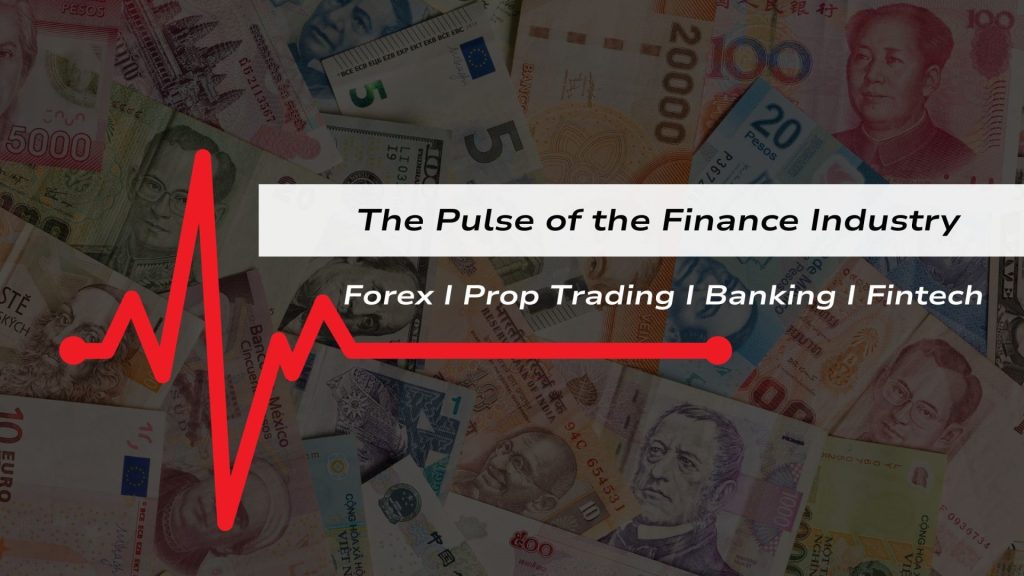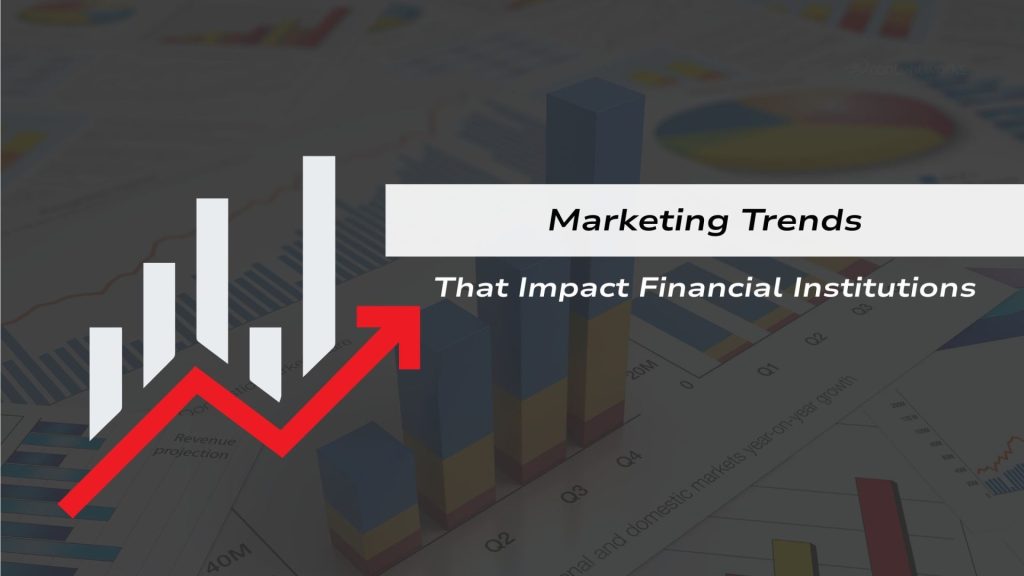Regulatory turbulence, industry news, geopolitical events and evolving marketing trends don’t stop for summer. As Q3 2025 kicks off, financial institutions must stay relevant, compliant and competitive. In our quarterly finance trends report, we cover the latest developments across the finance sector, along with upcoming events that may shape strategy and sentiment in the months ahead.
Finance Industry News

Forex Industry News: A Mixed Bag for Brokers
July opened with a wave of activity in the forex brokerage space, with several players releasing their Q2 turnover figures. The big story? Mixed results, with many brokers reporting reduced trading volumes compared to the record-breaking highs of Q1.
According to an eToro survey, long-term confidence in the US dollar and dollar-related assets is waning, having dropped to 34% in Q2 2025 and 11% from Q4 2024. Plus, the US Dollar Index (DXY) saw its biggest 6-month decline in 16 years during the quarter.
However, the USD, GBP and NZD strengthened moderately in Q2 while the JPY and NOK weakened significantly. The EUR, CHF and AUD also declined moderately cheap while the SEK and CAD hovered close to fair value.
While established names like Exness and IC Markets continue to lead with healthy numbers, several mid-tier brokers have seen a slowdown, attributed to reduced volatility, summer seasonality and cautious retail sentiment.
On the regulatory front, crackdowns continue.
- The FCA recently revoked licenses of two brokers operating without sufficient consumer protection mechanisms.
- CySEC has issued fresh warnings against clone firms and unregulated entities targeting EU traders.
- Meanwhile, ASIC continues its push for tighter controls on leverage and CFD offerings, with more broker audits reportedly underway.
At the same time, we have seen many brokers pivoting their operations. Pivoting includes shifting offices to more flexible offshore jurisdictions or investing in new product lines like copy trading, tokenised assets or education platforms to diversify their appeal.
Prop Trading Popularity Continues. But the Landscape is Crowded
Prop trading continues to surge in popularity, particularly among Gen Z and millennial traders seeking funded accounts, low upfront capital requirements and gamified trading experiences.
According to Finance Magnates, the global prop trading market is projected to surpass $15 billion by the end of 2025, with over 200 active prop firms now operating globally. However, many newer entrants are struggling to maintain user trust, facing issues like unclear payout structures, poor risk models and regulatory grey zones.
While industry leaders like FTMO and MyForexFunds (pre-shutdown) saw millions in monthly revenue, dozens of smaller prop firms, launched in 2024–2025, have already folded or been exposed for failing to honour withdrawals. Traders are becoming more selective, gravitating toward firms with transparent rules, real-time dashboards and third-party verification tools.
Q2/2025 saw an all-time high of online searches for the term “Prop Trading, which reached 49,500 monthly searches. the United States and India contributed the highest number of searches, each accounting for 6,600 monthly searches, followed by the UK with 2,400 searches as of June 2025.
Fintech and Banking News
Finance stocks on the S&P 500 had a good run in the first half of 2025, gaining 9.2%, of Q2 contributed 5.5%.
Fintech stocks, in particular, experienced a mixed performance in Q2 2025. While the overall stock market, including tech, saw a strong rebound, fintech specifically had a more nuanced performance. Some key highlights during the quarter included:
- Klarna unveiled plans to function as a full-service digital bank. The fintech also launched a Visa-backed debit card. These announcements are seen as attempts to strengthen the company’s profile ahead of its IPO later in 2025.
- Stablecoin issuer Circle held its IPO in May, with the stock soaring 168% in its June 5 debut on the NYSE.
- Chime Financial also held its IPO on June 12, 2025. The stock was trading at a 19% premium to its IPO price by the first week of July. Analysts at JPMorgan, Morgan Stanley, UBS, Goldman Sachs and Deutsche Bank are bullish on the fintech stock.
- Meanwhile, Robinhood and Coinbase Global emerged as the best performing financial stocks in Q2. Robinhood’s stock rose 125% during the quarter while Coinbase gained 103.5%.
Marketing Trends Affecting Financial Institutions

Q3 is seeing significant shifts in the way financial brands market their services, especially in regulated spaces. Here are the trends worth noting:
#1 Purpose-Driven Positioning Is Gaining Ground
Post-2024, ESG fatigue has been replaced by calls for measurable impact, especially in financial literacy, climate risk and ethical trading. Time to showcase your finance brand’s tangible contribution: education, DEI or risk literacy. Highlight ESG-aligned investment products with clearer benchmarks. In the emerging markets, tie campaigns to financial access and resilience.
#2 AI-Generated Content is Widespread, But Requires Oversight
The rise of generative AI in finance content production (including AI chat tools and summarisers) has led to faster output. But compliance risks are growing. Heading into Q3, brokers must implement human-in-the-loop reviews for all AI-assisted content. They should also maintain clear documentation of sources for content tied to geopolitical or regulatory topics.
#3 Content Localisation is No Longer Optional
With geopolitical fragmentation and regional volatility in play, finance brands must tailor content to local contexts. Generic global messaging is less effective.
- Use region-specific economic narratives and regulatory references.
- Translate and adapt not just the language, but also tone, visuals and cultural cues.
- Example: A broker marketing in Latin America vs. Southeast Asia should reflect local economic drivers and political sentiment.
#4 B2C Retail Brokers Shift to Micro-Video & Live Formats
TikTok-style content dominates younger trader acquisition, particularly in the APAC, MENA and LATAM. Brokers should leverage short-form explainers on elections, oil prices or regulatory changes. Use compliance overlays and internal reviewers to mitigate legal risks (e.g., disclaimers in videos).
#5 Real-Time Market Narratives Are Outpacing Scheduled Content
Unexpected geopolitical shocks (e.g., the Strait of Hormuz threat) move markets quickly. Brands that offer same-day response stand to win trust and engagement. Partner with a financial content agency or build a newsroom function within your marketing team.
You can also:
- Align with analysts to pre-prepare risk scenarios.
- Schedule social, email, and push content for critical events (e.g., BRICS summit outcomes, tariff expirations).
#6 Google’s AI Search is Reshaping Content Discovery – E-E-A-T is Critical
Google’s rollout of AI Overviews and Search Generative Experience (SGE) is fundamentally changing how financial content is indexed. Brands that don’t optimise for Experience, Expertise, Authoritativeness and Trustworthiness (E-E-A-T) risk losing visibility in AI-driven results.
Here’s how finance brands can improve their content visibility:
- Focus on named, credentialed authors for market commentary and financial explainers.
- Include clear sourcing, data transparency and compliance notes in all content.
- Use structured content (FAQs, schema markups, scannable formats) to appear in AI-generated summaries.
- Regularly update articles to maintain freshness and accuracy. Outdated content can be penalised by AI systems.
Major Geopolitical Events in Q3 2025

Financial events have the potential to move the markets in a big way. By understanding what’s coming up, you can prepare campaigns to improve trader traction. Here are some potentially market moving geopolitical events coming up in Q3.
#1 BRICS+ Summit – July 6-7, 2025
- What’s happening: New Delhi hosts the BRICS+ Summit, expected to include new members and a push for a broader global influence.
- Why it matters: Potential realignment in trade and currency policies could influence emerging market flows and commodity pricing.
#2 End of US-EU Tariff Truce – July 9, 2025
- What’s happening: A 90-day freeze on reciprocal tariffs between the US and EU expires.
- Why it matters: Markets anticipate possible tariff renewals, prompting volatility in auto stocks, industrials and USD/EUR positions.
#3 End of US-China Tariff Pause – August 12, 2025
- What’s happening: The US-China suspension of additional tariffs lapses.
- Why it matters: Reescalation risk could threaten global supply chains, pressuring Asian equities and trade-exposed currencies.
#4 Bolivia General Election – August 17, 2025
- What’s happening: Bolivia heads to the polls amid ongoing social and political shifts.
- Why it matters: Results may influence regional trade policies and commodity prices, especially for lithium and gas.
#5 Taiwan Nuclear Referendum – August 23, 2025
- What’s happening: Taiwan votes on reactivating nuclear power plants.
- Why it matters: Energy policy changes can affect regional power markets, supply chains and Taiwan’s tech sector.
#6 UN General Assembly – Sept 9-23, 2025
- What’s happening: World leaders will convene in NYC.
- Why it matters: Expect new discussions on Ukraine, climate, Iran nuclear diplomacy, with spillover into global market sentiment.
#7 Guinea Constitutional Referendum – September 21, 2025
- What’s happening: Guinea votes to approve a new constitution, transitioning from military rule.
- Why it matters: A move toward stability could improve regional investment outlooks and influence the West African bond and commodity markets.
#8 Malian Pro-Democracy Protests Ongoing since May
- What’s happening: Large-scale demonstrations in Mali demanding democratic reforms.
- Why it matters: Continued instability in the Sahel may disrupt supply chains and deter foreign investment in natural resources.
#9 Guyana General Election – September 1, 2025
- What’s happening: Parliamentary election in the booming petrostate of Guyana.
- Why it matters: Political outcomes could shape oil production policy and affect global petroleum market sentiment.
Q3 Volatility Watch: What Brokers & Banks Should Do
- Prepare for Increased Market Swings:
With key tariff deadlines in July and August plus geopolitical hotspots, expect sharp, sudden moves in FX, equities and commodities.
- Promote Risk Management Products:
Highlight equity hedges, oil and energy optionalities, and USD-strength strategies in your client communications and marketing campaigns.
- Enhance Real-Time Content & Alerts:
Provide clients with timely market updates and scenario analyses tied to geopolitical developments to improve engagement and reduce churn.
- Review Compliance & Disclosures:
Ensure all marketing around volatility-sensitive products includes clear risk disclosures and complies with evolving regulations.
- Strengthen Liquidity & Execution Infrastructure:
Anticipate spikes in trading volumes; verify your systems can handle increased activity without slippage or downtime.
- Educate Clients on Volatility-Induced Opportunities and Risks:
Use webinars, videos, and social media to help traders understand how to navigate Q3’s market conditions safely.
Regulatory Spotlight: Stay Updated

Q3 is already shaping up to be another heavy quarter for compliance teams. From ESMA’s reviews of cross-border operations to MiCA’s gradual rollout, the regulatory pressure is real.
Other regulations to watch for in Q3 are:
- The Digital Operational Resilience Act (DORA) will be mandatory, focusing on strengthening cybersecurity and IT risk management across financial entities.
- The Financial Data Access (FiDA) framework, proposed by the European Commission, is expected to be adopted, promoting secure data sharing and innovation in financial services.
- The FCA will finalise its policy statement on data decommissioning, removing certain reporting and notification requirements.
- Draft regulations related to the UK’s Financial Services and Markets Act 2023, specifically concerning capital buffers and macro-prudential measures, are anticipated.
- The ASIC plans to update its Regulatory Guide 183 on codes of conduct and publish a report on superannuation trustees’ retirement communications in Q3.
- India’s Banking Laws (Amendment) Act, 2025, which came into effect in April 2025, will continue to influence banking operations, particularly regarding reporting timelines and customer nominations.
Globally, regulators will likely push for greater transparency and accountability in AI and machine learning models used in finance, with new guidelines and rules emerging.
Contentworks Agency closely monitors shifts in regulations and translates them into actionable, compliant content that informs traders and protects brands. For a full breakdown of the latest regulatory moves, don’t miss our Regulations Roundup – July 2025
At Contentworks Agency, we combine real-time market awareness, regulatory fluency and creative marketing expertise to deliver finance content that performs. Get in touch to future-proof your marketing strategy for Q3 and beyond.
Sources
We used the following sources to produce the finance trends report:
- www.nasdaq.com/articles/june-second-quarter-2025-review-and-outlook
- www.cysec.gov.cy
- https://asic.gov.au
- www.thinkwithgoogle.com
- https://business.linkedin.com/marketing-solutions
- www.bloomberg.com/politics
- www.reuters.com/world
- www.economist.com
- slaughterandmay.com
- https://kpmg.com
- www.marketwatch.com
- https://propfirmapp.com/statistics
- www.morningstar.com/stocks/best-worst-performing-stocks
- www.financemagnates.com
- www.leaprate.com
- www.fca.org.uk/news
- www.insightinvestment.com/uk/perspectives/currency-quarterly-q2-2025/
